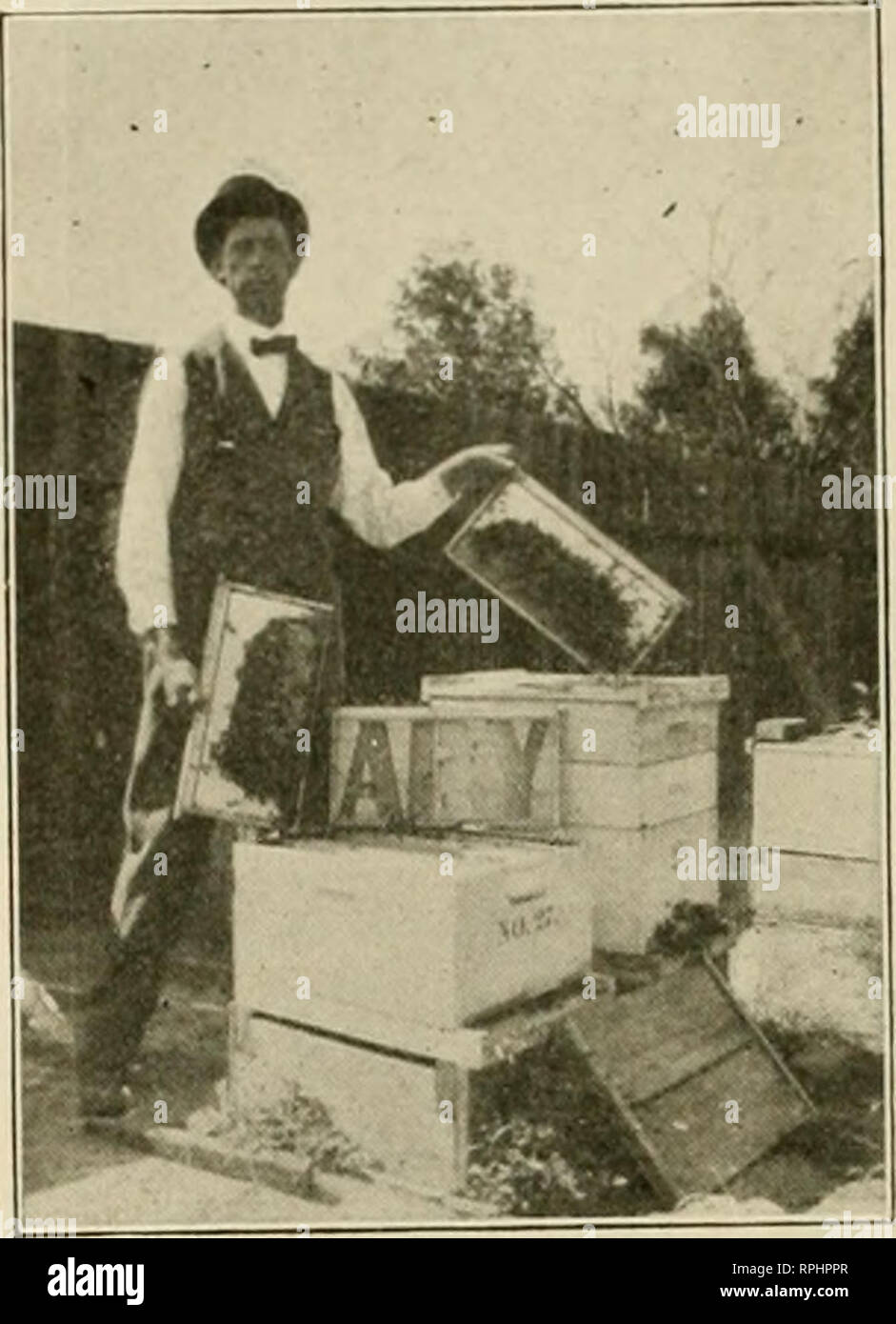. American bee journal. Bee culture; Bees. 202 luly, 11)12. American liee Journal that the total number of white flowers mav exceed the red. Prof. Lovell says that "among the wind-pollinated plants are the grasses, sedges, and rushes; many homely weeds, like the pigweeds, sorrels, net- tles and ragweeds, as well as many de- ciduous bushes and trees, as the alders, poplars, elms, beeches and birches." He estimates that these, including a few pollinated by water, number 104(!. Deducting this number from 4irJ», leaves •2!I74 species depending upon in- sects of various kinds. page of the

Image details
Contributor:
Library Book Collection / Alamy Stock PhotoImage ID:
RPHPPRFile size:
7.1 MB (236.2 KB Compressed download)Releases:
Model - no | Property - noDo I need a release?Dimensions:
1345 x 1858 px | 22.8 x 31.5 cm | 9 x 12.4 inches | 150dpiMore information:
This image is a public domain image, which means either that copyright has expired in the image or the copyright holder has waived their copyright. Alamy charges you a fee for access to the high resolution copy of the image.
This image could have imperfections as it’s either historical or reportage.
. American bee journal. Bee culture; Bees. 202 luly, 11)12. American liee Journal that the total number of white flowers mav exceed the red. Prof. Lovell says that "among the wind-pollinated plants are the grasses, sedges, and rushes; many homely weeds, like the pigweeds, sorrels, net- tles and ragweeds, as well as many de- ciduous bushes and trees, as the alders, poplars, elms, beeches and birches." He estimates that these, including a few pollinated by water, number 104(!. Deducting this number from 4irJ», leaves •2!I74 species depending upon in- sects of various kinds. page of the , merican Bee Journal for March, in his apiary display. Mr. Malta, an island in the Mediterranean sea. was "Melita " originally. That was its Latin name. " Mel " is " honey " in Latin. Was the one derived from the other ? An Industrious Nation is like the honey-bees; we take away their wax and their honey, and the next moment they work to produce more.— rollaire. A Novel Display.—The photograph given represents Mr J. C. Frank, of Dodge City, Kans., and a corner of his apiarv. The capital letters A R Y, shown in the photo, are the last letters of the word "apiary, " used by him to make his bees build, out of comb honey, the sign shown on the front. Mr. J. C. Frank and Part ok His Aimarv. Frank is an active worker, and makes beautiful Fair displays of both bees and honey. Success to such men, for they help to advertise honey among consumers. Bee-Keeping ut a sheet of wireclolli over it. It is now an hour later, and Ihosu left in the tree have gone into the box. also. I don't want them, and I am so disgusted not to be able to find some way to discipline them and make them return home to work, 1 shall improvise a super and put a few sec- tions in it. and let them do what they like; and I shall again go through the hives tomor- row. Townsend's extracting super, under the sections, did not work this time, "What 1 have in mind to do